CARLOS CRUZ-DIEZ: CHROMOSATURATION AT PAMM
Acquired for PAMM’s collection in 2020 with funds provided by Jorge M. Pérez, Chromosaturation is an immersive environment that reimagines color as an embodied experience.
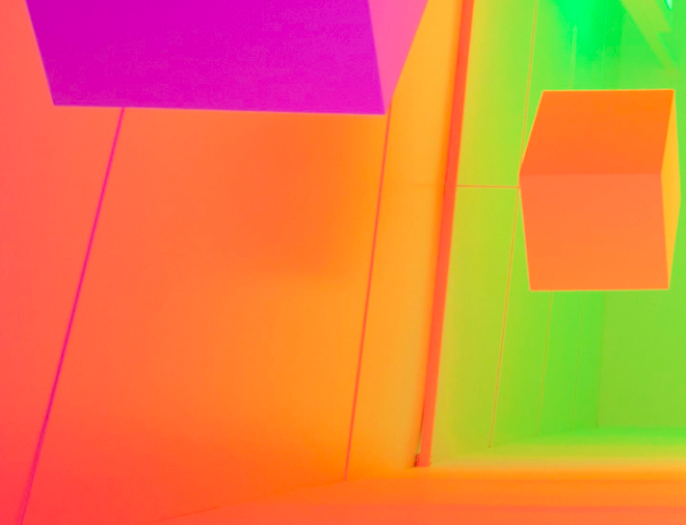
Carlos Cruz-Diez (b. 1923, Caracas; d. 2019, Paris) is a major protagonist in the story of late 20th-century art. His investigations into the ever changing and ephemeral nature of color established him as one of the key pioneers of Kinetic and Optical art. Through his experimental use of light, movement, space, and viewer interactivity, Cruz-Diez encouraged “an awareness of the instability of reality” while proposing a new definition of art as a field of active participation.
Initially conceived in 1965, the installation consists of three connected chambers infused with intensely saturated red, green, and blue light. Upon entering this space, visitors are transported by a chromatic experience that shifts as one moves from one space to the next. The experience scrambles the retina, which is normally accustomed to perceiving a wide range of colors simultaneously. Eliciting both a strong sensorial and emotional response in viewers, the installation transitions from a visual experience into a bodily one, underscoring the notion of color as a material, physical phenomenon that unfolds continuously in time and space.
-
Installation view: Carlos Cruz-Diez. "Chromosaturation," 1965/2017. Museo Würth La Rioja. Photo: Rafael Lafuente. © Museo Würth/Rafael Lafuente/Bridgeman
-
Installation view of Carlos Cruz-Diez, "Chromosaturation," 1965/2007. Collection Pérez Art Museum Miami. © Carlos Cruz-Diez. Photography by Lazaro LLanes.
-
Installation view: Carlos Cruz-Diez. "Chromosaturation," 1965/2017. Museo Würth La Rioja. Photo: Rafael Lafuente. © Museo Würth/Rafael Lafuente/Bridgeman
-
Carlos Cruz-Diez in Chromosaturation. Installation view: Carlos Cruz-Diez. De lo participativo a lo interactivo. Otra noción del color, l'Almodı,́ Valencia, España, 2003. © Courtesy of Atelier Cruz-Diez Paris/Bridgeman Images
-
"Carlos Cruz-Diez: Color in Space and Time", Museum of Fine Arts, Houston (MFAH), Houston, United States.
-
"Cruz-Diez: Color in Space", Jeonbuk Art Museum, Jeonbuk, South Korea.
Chromosaturation is emblematic of Cruz-Diez’s pioneering contribution to the experimental practices that emerged in the 1960s and 1970s, which proposed the dematerialization of the object in favor of participatory situations that engage the spectator’s body, senses, and subjectivity. Cruz-Diez’s experimentations with color and sensory perception anticipated many of the relational and participatory tendencies of recent art.
Related Topics
May interest you
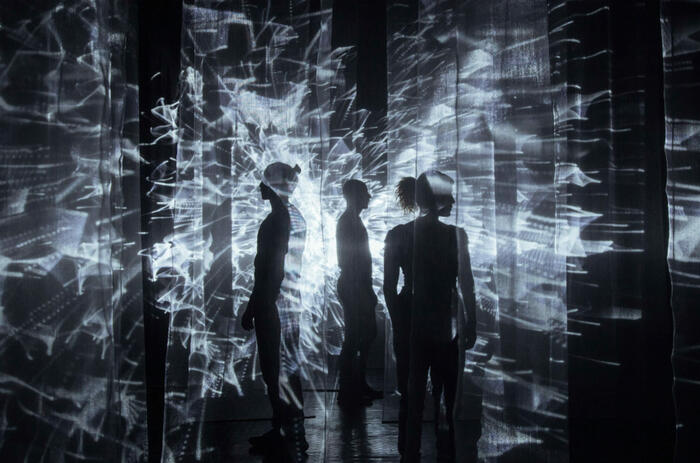
A few decades ago, the art utopia consisted of incorporating the viewer into the work, either physically or sensorially. Frank Popper called these practices with the term "participation art".
FROM PARTICIPATION TO IMMERSION
A few decades ago, the art utopia consisted of incorporating the viewer into the work, either physically or sensorially. Frank Popper called these practices with the term "participation art".

A few decades ago, the art utopia consisted of incorporating the viewer into the work, either physically or sensorially. Frank Popper called these practices with the term "participation art".
FROM PARTICIPATION TO IMMERSION
A few decades ago, the art utopia consisted of incorporating the viewer into the work, either physically or sensorially. Frank Popper called these practices with the term "participation art".
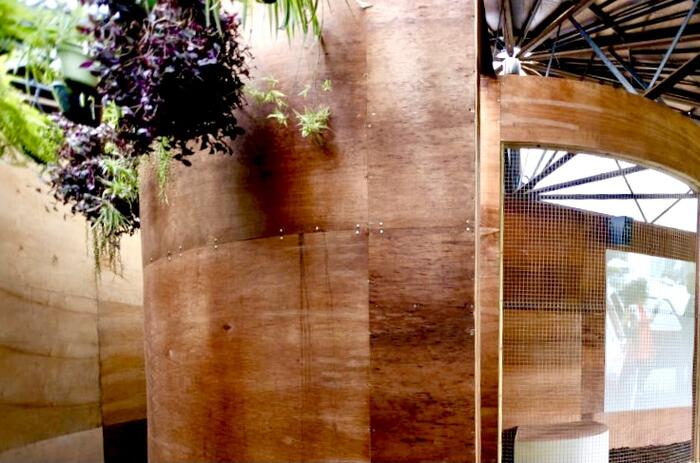
Exhibited at the Spcrates Sculpture Park, in collaboration with Projeto Hélio Oiticica and Americas Society. Titled Subterranean Tropicália Projects: PN15 1971/2022, this immersive environment is the first realization of a never-before-executed idea by the late Brazilian artist.
HÉLIO OITICICA’S INSTALLATION IN NEW YORK
Exhibited at the Spcrates Sculpture Park, in collaboration with Projeto Hélio Oiticica and Americas Society. Titled Subterranean Tropicália Projects: PN15 1971/2022, this immersive environment is the first realization of a never-before-executed idea by the late Brazilian artist.
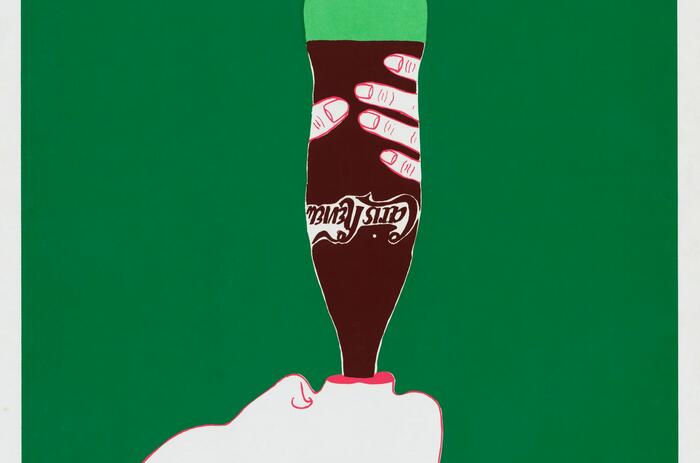
Pérez Art Museum Miami (PAMM) presents Marisol and Warhol Take New York, an exhibition featuring iconic artworks and ephemera by artists Marisol Escobar and Andy Warhol, opening on April 15, 2022. The exhibition not only offers a glimpse into Marisol and Warhol’s close bond as friends and artistic collaborators, but chronicles the development of both artists' careers over an eight-year span from 1960–1968, while highlighting their influence on each other, their parallel rises to success, and their savvy navigation of the highly competitive 1960’s gallery world.
PAMM REINSCRIBES MARISOL ESCOBAR INTO AMERICAN POP ART
Pérez Art Museum Miami (PAMM) presents Marisol and Warhol Take New York, an exhibition featuring iconic artworks and ephemera by artists Marisol Escobar and Andy Warhol, opening on April 15, 2022. The exhibition not only offers a glimpse into Marisol and Warhol’s close bond as friends and artistic collaborators, but chronicles the development of both artists' careers over an eight-year span from 1960–1968, while highlighting their influence on each other, their parallel rises to success, and their savvy navigation of the highly competitive 1960’s gallery world.
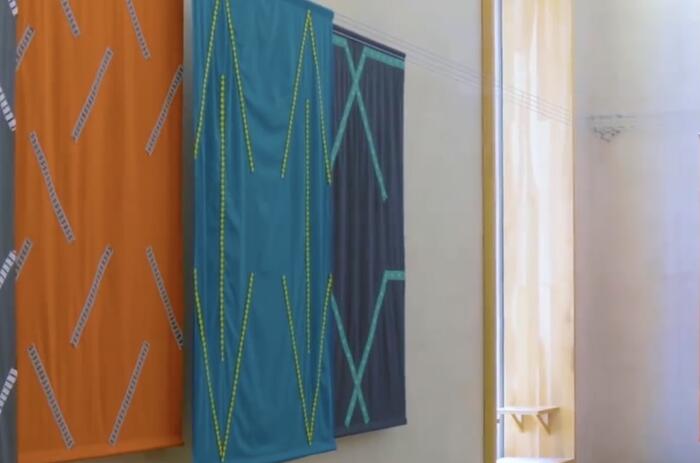
Felipe Mujica: The Swaying Motion on the Bank of the River Falls highlights the ecological and cultural diversity of South Florida in collaboration with the Miccosukee tribe. It features an installation of over 20 new fabric panels, or “curtains,” that spatially interact with the museum as well as function as visual, tactile and conceptual surfaces of inclusion, dialogue, specifically with the tradition of Patchwork of the Miccosukee Tribe. The project is the result of a years-long collaboration between the Chilean artist and Khadijah Cypress, a Miccosukee artisan.
PAMM INAUGURATES AN EXHIBITION BY FELIPE MUJICA IN COLLABORATION WITH THE MICCOSUKEE TRIBE IN SOUTH FLORIDA
Felipe Mujica: The Swaying Motion on the Bank of the River Falls highlights the ecological and cultural diversity of South Florida in collaboration with the Miccosukee tribe. It features an installation of over 20 new fabric panels, or “curtains,” that spatially interact with the museum as well as function as visual, tactile and conceptual surfaces of inclusion, dialogue, specifically with the tradition of Patchwork of the Miccosukee Tribe. The project is the result of a years-long collaboration between the Chilean artist and Khadijah Cypress, a Miccosukee artisan.
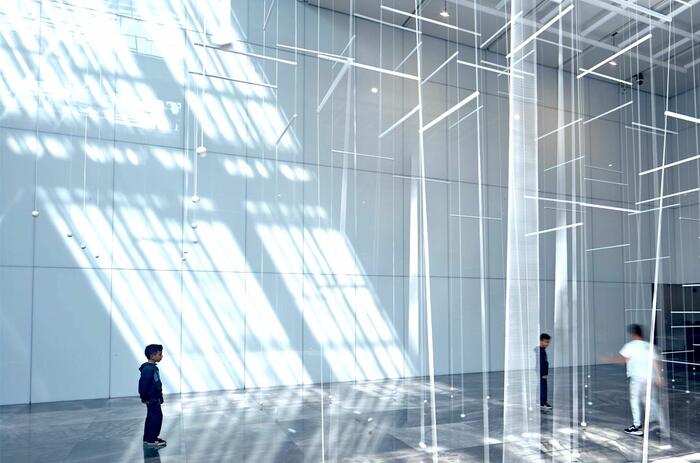
When artists, designers, industry resources, and clients work together, common places are transformed into spectacular spaces. CODAworx, the hub of the commissioned art economy, has announced the winners of the ninth annual international CODAawards: Collaboration of Design + Art. The CODAawards recognize collaborations that result in outstanding projects which successfully integrate commissioned art into interior, architectural, or public spaces.
MAGDALENA FERNÁNDEZ WINS INTERNATIONAL CODAawards
When artists, designers, industry resources, and clients work together, common places are transformed into spectacular spaces. CODAworx, the hub of the commissioned art economy, has announced the winners of the ninth annual international CODAawards: Collaboration of Design + Art. The CODAawards recognize collaborations that result in outstanding projects which successfully integrate commissioned art into interior, architectural, or public spaces.
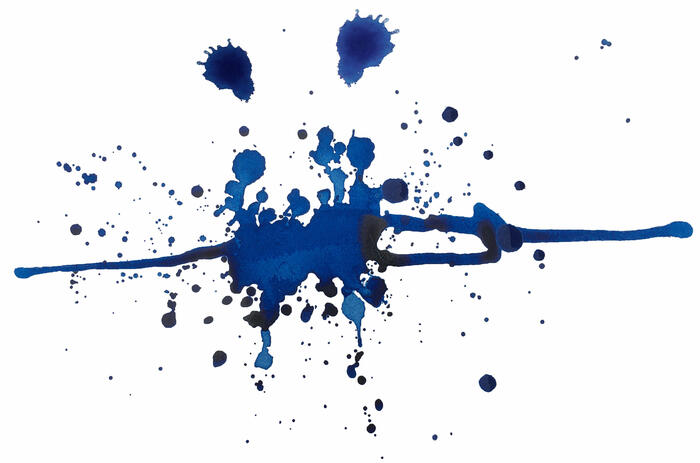
La Intermundial Holobiente is an inter/un-disciplinary group that attempts to invent imaginative practices based on modes of thought that are more than human —that is, not anthropo-centered. Its members are Claudia Fontes, visual artist represented by the gallery, philosopher Paula Fleisner and writer Pablo M. Ruiz.
LA INTERMUNDIAL HOLOBIENTE
La Intermundial Holobiente is an inter/un-disciplinary group that attempts to invent imaginative practices based on modes of thought that are more than human —that is, not anthropo-centered. Its members are Claudia Fontes, visual artist represented by the gallery, philosopher Paula Fleisner and writer Pablo M. Ruiz.

Exhibited by The Institute for Studies on Latin American Art (ISLAA) and curated by Mariano López Seoane and Bernardo Mosqueira, Eros Rising presents drawings, paintings, and photographs by Artur Barrio, Oscar Bony, Carmelo Carrá, Feliciano Centurión, David Lamelas, Castiel Vitorino Brasileiro, Carlos Motta, Wynnie Mynerva, La Chola Poblete, and Tadáskía that seek to give form to the intangible experience of eroticism.
ISLAA PRESENTS “EROS RISING: VISIONS OF THE EROTIC IN LATIN AMERICAN ART”
Exhibited by The Institute for Studies on Latin American Art (ISLAA) and curated by Mariano López Seoane and Bernardo Mosqueira, Eros Rising presents drawings, paintings, and photographs by Artur Barrio, Oscar Bony, Carmelo Carrá, Feliciano Centurión, David Lamelas, Castiel Vitorino Brasileiro, Carlos Motta, Wynnie Mynerva, La Chola Poblete, and Tadáskía that seek to give form to the intangible experience of eroticism.
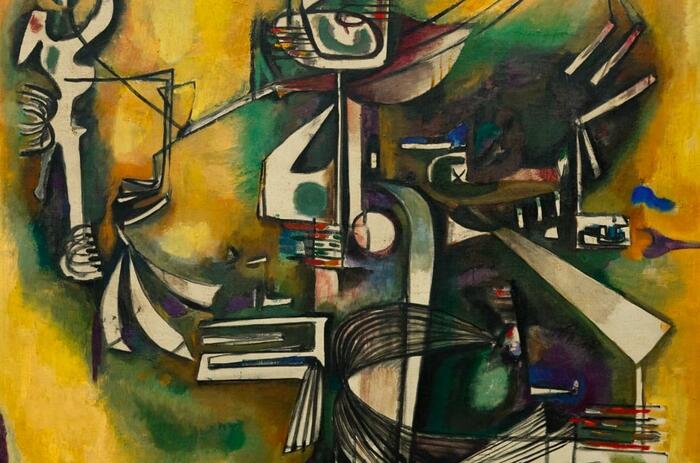
Mariano: Variations on a Theme is the first major retrospective exhibition of the work of Cuban artist Mariano Rodríguez (b. 1912, Havana; d. 1990, Havana) in the United States. Exhibited first at the McMullen Museum of Art in Boston, the exhibition is organized with the collaboration of the Fundación Mariano Rodríguez.
PAMM EXHIBITS “MARIANO: VARIATIONS ON A THEME”
Mariano: Variations on a Theme is the first major retrospective exhibition of the work of Cuban artist Mariano Rodríguez (b. 1912, Havana; d. 1990, Havana) in the United States. Exhibited first at the McMullen Museum of Art in Boston, the exhibition is organized with the collaboration of the Fundación Mariano Rodríguez.

A few decades ago, the art utopia consisted of incorporating the viewer into the work, either physically or sensorially. Frank Popper called these practices with the term "participation art".
FROM PARTICIPATION TO IMMERSION
A few decades ago, the art utopia consisted of incorporating the viewer into the work, either physically or sensorially. Frank Popper called these practices with the term "participation art".

Exhibited at the Spcrates Sculpture Park, in collaboration with Projeto Hélio Oiticica and Americas Society. Titled Subterranean Tropicália Projects: PN15 1971/2022, this immersive environment is the first realization of a never-before-executed idea by the late Brazilian artist.
HÉLIO OITICICA’S INSTALLATION IN NEW YORK
Exhibited at the Spcrates Sculpture Park, in collaboration with Projeto Hélio Oiticica and Americas Society. Titled Subterranean Tropicália Projects: PN15 1971/2022, this immersive environment is the first realization of a never-before-executed idea by the late Brazilian artist.

Pérez Art Museum Miami (PAMM) presents Marisol and Warhol Take New York, an exhibition featuring iconic artworks and ephemera by artists Marisol Escobar and Andy Warhol, opening on April 15, 2022. The exhibition not only offers a glimpse into Marisol and Warhol’s close bond as friends and artistic collaborators, but chronicles the development of both artists' careers over an eight-year span from 1960–1968, while highlighting their influence on each other, their parallel rises to success, and their savvy navigation of the highly competitive 1960’s gallery world.
PAMM REINSCRIBES MARISOL ESCOBAR INTO AMERICAN POP ART
Pérez Art Museum Miami (PAMM) presents Marisol and Warhol Take New York, an exhibition featuring iconic artworks and ephemera by artists Marisol Escobar and Andy Warhol, opening on April 15, 2022. The exhibition not only offers a glimpse into Marisol and Warhol’s close bond as friends and artistic collaborators, but chronicles the development of both artists' careers over an eight-year span from 1960–1968, while highlighting their influence on each other, their parallel rises to success, and their savvy navigation of the highly competitive 1960’s gallery world.

Felipe Mujica: The Swaying Motion on the Bank of the River Falls highlights the ecological and cultural diversity of South Florida in collaboration with the Miccosukee tribe. It features an installation of over 20 new fabric panels, or “curtains,” that spatially interact with the museum as well as function as visual, tactile and conceptual surfaces of inclusion, dialogue, specifically with the tradition of Patchwork of the Miccosukee Tribe. The project is the result of a years-long collaboration between the Chilean artist and Khadijah Cypress, a Miccosukee artisan.
PAMM INAUGURATES AN EXHIBITION BY FELIPE MUJICA IN COLLABORATION WITH THE MICCOSUKEE TRIBE IN SOUTH FLORIDA
Felipe Mujica: The Swaying Motion on the Bank of the River Falls highlights the ecological and cultural diversity of South Florida in collaboration with the Miccosukee tribe. It features an installation of over 20 new fabric panels, or “curtains,” that spatially interact with the museum as well as function as visual, tactile and conceptual surfaces of inclusion, dialogue, specifically with the tradition of Patchwork of the Miccosukee Tribe. The project is the result of a years-long collaboration between the Chilean artist and Khadijah Cypress, a Miccosukee artisan.

When artists, designers, industry resources, and clients work together, common places are transformed into spectacular spaces. CODAworx, the hub of the commissioned art economy, has announced the winners of the ninth annual international CODAawards: Collaboration of Design + Art. The CODAawards recognize collaborations that result in outstanding projects which successfully integrate commissioned art into interior, architectural, or public spaces.
MAGDALENA FERNÁNDEZ WINS INTERNATIONAL CODAawards
When artists, designers, industry resources, and clients work together, common places are transformed into spectacular spaces. CODAworx, the hub of the commissioned art economy, has announced the winners of the ninth annual international CODAawards: Collaboration of Design + Art. The CODAawards recognize collaborations that result in outstanding projects which successfully integrate commissioned art into interior, architectural, or public spaces.

La Intermundial Holobiente is an inter/un-disciplinary group that attempts to invent imaginative practices based on modes of thought that are more than human —that is, not anthropo-centered. Its members are Claudia Fontes, visual artist represented by the gallery, philosopher Paula Fleisner and writer Pablo M. Ruiz.
LA INTERMUNDIAL HOLOBIENTE
La Intermundial Holobiente is an inter/un-disciplinary group that attempts to invent imaginative practices based on modes of thought that are more than human —that is, not anthropo-centered. Its members are Claudia Fontes, visual artist represented by the gallery, philosopher Paula Fleisner and writer Pablo M. Ruiz.

Exhibited by The Institute for Studies on Latin American Art (ISLAA) and curated by Mariano López Seoane and Bernardo Mosqueira, Eros Rising presents drawings, paintings, and photographs by Artur Barrio, Oscar Bony, Carmelo Carrá, Feliciano Centurión, David Lamelas, Castiel Vitorino Brasileiro, Carlos Motta, Wynnie Mynerva, La Chola Poblete, and Tadáskía that seek to give form to the intangible experience of eroticism.
ISLAA PRESENTS “EROS RISING: VISIONS OF THE EROTIC IN LATIN AMERICAN ART”
Exhibited by The Institute for Studies on Latin American Art (ISLAA) and curated by Mariano López Seoane and Bernardo Mosqueira, Eros Rising presents drawings, paintings, and photographs by Artur Barrio, Oscar Bony, Carmelo Carrá, Feliciano Centurión, David Lamelas, Castiel Vitorino Brasileiro, Carlos Motta, Wynnie Mynerva, La Chola Poblete, and Tadáskía that seek to give form to the intangible experience of eroticism.

Mariano: Variations on a Theme is the first major retrospective exhibition of the work of Cuban artist Mariano Rodríguez (b. 1912, Havana; d. 1990, Havana) in the United States. Exhibited first at the McMullen Museum of Art in Boston, the exhibition is organized with the collaboration of the Fundación Mariano Rodríguez.
PAMM EXHIBITS “MARIANO: VARIATIONS ON A THEME”
Mariano: Variations on a Theme is the first major retrospective exhibition of the work of Cuban artist Mariano Rodríguez (b. 1912, Havana; d. 1990, Havana) in the United States. Exhibited first at the McMullen Museum of Art in Boston, the exhibition is organized with the collaboration of the Fundación Mariano Rodríguez.

A few decades ago, the art utopia consisted of incorporating the viewer into the work, either physically or sensorially. Frank Popper called these practices with the term "participation art".
FROM PARTICIPATION TO IMMERSION
A few decades ago, the art utopia consisted of incorporating the viewer into the work, either physically or sensorially. Frank Popper called these practices with the term "participation art".

Exhibited at the Spcrates Sculpture Park, in collaboration with Projeto Hélio Oiticica and Americas Society. Titled Subterranean Tropicália Projects: PN15 1971/2022, this immersive environment is the first realization of a never-before-executed idea by the late Brazilian artist.
HÉLIO OITICICA’S INSTALLATION IN NEW YORK
Exhibited at the Spcrates Sculpture Park, in collaboration with Projeto Hélio Oiticica and Americas Society. Titled Subterranean Tropicália Projects: PN15 1971/2022, this immersive environment is the first realization of a never-before-executed idea by the late Brazilian artist.

Pérez Art Museum Miami (PAMM) presents Marisol and Warhol Take New York, an exhibition featuring iconic artworks and ephemera by artists Marisol Escobar and Andy Warhol, opening on April 15, 2022. The exhibition not only offers a glimpse into Marisol and Warhol’s close bond as friends and artistic collaborators, but chronicles the development of both artists' careers over an eight-year span from 1960–1968, while highlighting their influence on each other, their parallel rises to success, and their savvy navigation of the highly competitive 1960’s gallery world.
PAMM REINSCRIBES MARISOL ESCOBAR INTO AMERICAN POP ART
Pérez Art Museum Miami (PAMM) presents Marisol and Warhol Take New York, an exhibition featuring iconic artworks and ephemera by artists Marisol Escobar and Andy Warhol, opening on April 15, 2022. The exhibition not only offers a glimpse into Marisol and Warhol’s close bond as friends and artistic collaborators, but chronicles the development of both artists' careers over an eight-year span from 1960–1968, while highlighting their influence on each other, their parallel rises to success, and their savvy navigation of the highly competitive 1960’s gallery world.

Felipe Mujica: The Swaying Motion on the Bank of the River Falls highlights the ecological and cultural diversity of South Florida in collaboration with the Miccosukee tribe. It features an installation of over 20 new fabric panels, or “curtains,” that spatially interact with the museum as well as function as visual, tactile and conceptual surfaces of inclusion, dialogue, specifically with the tradition of Patchwork of the Miccosukee Tribe. The project is the result of a years-long collaboration between the Chilean artist and Khadijah Cypress, a Miccosukee artisan.
PAMM INAUGURATES AN EXHIBITION BY FELIPE MUJICA IN COLLABORATION WITH THE MICCOSUKEE TRIBE IN SOUTH FLORIDA
Felipe Mujica: The Swaying Motion on the Bank of the River Falls highlights the ecological and cultural diversity of South Florida in collaboration with the Miccosukee tribe. It features an installation of over 20 new fabric panels, or “curtains,” that spatially interact with the museum as well as function as visual, tactile and conceptual surfaces of inclusion, dialogue, specifically with the tradition of Patchwork of the Miccosukee Tribe. The project is the result of a years-long collaboration between the Chilean artist and Khadijah Cypress, a Miccosukee artisan.

When artists, designers, industry resources, and clients work together, common places are transformed into spectacular spaces. CODAworx, the hub of the commissioned art economy, has announced the winners of the ninth annual international CODAawards: Collaboration of Design + Art. The CODAawards recognize collaborations that result in outstanding projects which successfully integrate commissioned art into interior, architectural, or public spaces.
MAGDALENA FERNÁNDEZ WINS INTERNATIONAL CODAawards
When artists, designers, industry resources, and clients work together, common places are transformed into spectacular spaces. CODAworx, the hub of the commissioned art economy, has announced the winners of the ninth annual international CODAawards: Collaboration of Design + Art. The CODAawards recognize collaborations that result in outstanding projects which successfully integrate commissioned art into interior, architectural, or public spaces.

La Intermundial Holobiente is an inter/un-disciplinary group that attempts to invent imaginative practices based on modes of thought that are more than human —that is, not anthropo-centered. Its members are Claudia Fontes, visual artist represented by the gallery, philosopher Paula Fleisner and writer Pablo M. Ruiz.
LA INTERMUNDIAL HOLOBIENTE
La Intermundial Holobiente is an inter/un-disciplinary group that attempts to invent imaginative practices based on modes of thought that are more than human —that is, not anthropo-centered. Its members are Claudia Fontes, visual artist represented by the gallery, philosopher Paula Fleisner and writer Pablo M. Ruiz.

Exhibited by The Institute for Studies on Latin American Art (ISLAA) and curated by Mariano López Seoane and Bernardo Mosqueira, Eros Rising presents drawings, paintings, and photographs by Artur Barrio, Oscar Bony, Carmelo Carrá, Feliciano Centurión, David Lamelas, Castiel Vitorino Brasileiro, Carlos Motta, Wynnie Mynerva, La Chola Poblete, and Tadáskía that seek to give form to the intangible experience of eroticism.
ISLAA PRESENTS “EROS RISING: VISIONS OF THE EROTIC IN LATIN AMERICAN ART”
Exhibited by The Institute for Studies on Latin American Art (ISLAA) and curated by Mariano López Seoane and Bernardo Mosqueira, Eros Rising presents drawings, paintings, and photographs by Artur Barrio, Oscar Bony, Carmelo Carrá, Feliciano Centurión, David Lamelas, Castiel Vitorino Brasileiro, Carlos Motta, Wynnie Mynerva, La Chola Poblete, and Tadáskía that seek to give form to the intangible experience of eroticism.

Mariano: Variations on a Theme is the first major retrospective exhibition of the work of Cuban artist Mariano Rodríguez (b. 1912, Havana; d. 1990, Havana) in the United States. Exhibited first at the McMullen Museum of Art in Boston, the exhibition is organized with the collaboration of the Fundación Mariano Rodríguez.
PAMM EXHIBITS “MARIANO: VARIATIONS ON A THEME”
Mariano: Variations on a Theme is the first major retrospective exhibition of the work of Cuban artist Mariano Rodríguez (b. 1912, Havana; d. 1990, Havana) in the United States. Exhibited first at the McMullen Museum of Art in Boston, the exhibition is organized with the collaboration of the Fundación Mariano Rodríguez.

A few decades ago, the art utopia consisted of incorporating the viewer into the work, either physically or sensorially. Frank Popper called these practices with the term "participation art".
FROM PARTICIPATION TO IMMERSION
A few decades ago, the art utopia consisted of incorporating the viewer into the work, either physically or sensorially. Frank Popper called these practices with the term "participation art".

Exhibited at the Spcrates Sculpture Park, in collaboration with Projeto Hélio Oiticica and Americas Society. Titled Subterranean Tropicália Projects: PN15 1971/2022, this immersive environment is the first realization of a never-before-executed idea by the late Brazilian artist.
HÉLIO OITICICA’S INSTALLATION IN NEW YORK
Exhibited at the Spcrates Sculpture Park, in collaboration with Projeto Hélio Oiticica and Americas Society. Titled Subterranean Tropicália Projects: PN15 1971/2022, this immersive environment is the first realization of a never-before-executed idea by the late Brazilian artist.

Pérez Art Museum Miami (PAMM) presents Marisol and Warhol Take New York, an exhibition featuring iconic artworks and ephemera by artists Marisol Escobar and Andy Warhol, opening on April 15, 2022. The exhibition not only offers a glimpse into Marisol and Warhol’s close bond as friends and artistic collaborators, but chronicles the development of both artists' careers over an eight-year span from 1960–1968, while highlighting their influence on each other, their parallel rises to success, and their savvy navigation of the highly competitive 1960’s gallery world.
PAMM REINSCRIBES MARISOL ESCOBAR INTO AMERICAN POP ART
Pérez Art Museum Miami (PAMM) presents Marisol and Warhol Take New York, an exhibition featuring iconic artworks and ephemera by artists Marisol Escobar and Andy Warhol, opening on April 15, 2022. The exhibition not only offers a glimpse into Marisol and Warhol’s close bond as friends and artistic collaborators, but chronicles the development of both artists' careers over an eight-year span from 1960–1968, while highlighting their influence on each other, their parallel rises to success, and their savvy navigation of the highly competitive 1960’s gallery world.

Felipe Mujica: The Swaying Motion on the Bank of the River Falls highlights the ecological and cultural diversity of South Florida in collaboration with the Miccosukee tribe. It features an installation of over 20 new fabric panels, or “curtains,” that spatially interact with the museum as well as function as visual, tactile and conceptual surfaces of inclusion, dialogue, specifically with the tradition of Patchwork of the Miccosukee Tribe. The project is the result of a years-long collaboration between the Chilean artist and Khadijah Cypress, a Miccosukee artisan.
PAMM INAUGURATES AN EXHIBITION BY FELIPE MUJICA IN COLLABORATION WITH THE MICCOSUKEE TRIBE IN SOUTH FLORIDA
Felipe Mujica: The Swaying Motion on the Bank of the River Falls highlights the ecological and cultural diversity of South Florida in collaboration with the Miccosukee tribe. It features an installation of over 20 new fabric panels, or “curtains,” that spatially interact with the museum as well as function as visual, tactile and conceptual surfaces of inclusion, dialogue, specifically with the tradition of Patchwork of the Miccosukee Tribe. The project is the result of a years-long collaboration between the Chilean artist and Khadijah Cypress, a Miccosukee artisan.

When artists, designers, industry resources, and clients work together, common places are transformed into spectacular spaces. CODAworx, the hub of the commissioned art economy, has announced the winners of the ninth annual international CODAawards: Collaboration of Design + Art. The CODAawards recognize collaborations that result in outstanding projects which successfully integrate commissioned art into interior, architectural, or public spaces.
MAGDALENA FERNÁNDEZ WINS INTERNATIONAL CODAawards
When artists, designers, industry resources, and clients work together, common places are transformed into spectacular spaces. CODAworx, the hub of the commissioned art economy, has announced the winners of the ninth annual international CODAawards: Collaboration of Design + Art. The CODAawards recognize collaborations that result in outstanding projects which successfully integrate commissioned art into interior, architectural, or public spaces.

La Intermundial Holobiente is an inter/un-disciplinary group that attempts to invent imaginative practices based on modes of thought that are more than human —that is, not anthropo-centered. Its members are Claudia Fontes, visual artist represented by the gallery, philosopher Paula Fleisner and writer Pablo M. Ruiz.
LA INTERMUNDIAL HOLOBIENTE
La Intermundial Holobiente is an inter/un-disciplinary group that attempts to invent imaginative practices based on modes of thought that are more than human —that is, not anthropo-centered. Its members are Claudia Fontes, visual artist represented by the gallery, philosopher Paula Fleisner and writer Pablo M. Ruiz.

Exhibited by The Institute for Studies on Latin American Art (ISLAA) and curated by Mariano López Seoane and Bernardo Mosqueira, Eros Rising presents drawings, paintings, and photographs by Artur Barrio, Oscar Bony, Carmelo Carrá, Feliciano Centurión, David Lamelas, Castiel Vitorino Brasileiro, Carlos Motta, Wynnie Mynerva, La Chola Poblete, and Tadáskía that seek to give form to the intangible experience of eroticism.
ISLAA PRESENTS “EROS RISING: VISIONS OF THE EROTIC IN LATIN AMERICAN ART”
Exhibited by The Institute for Studies on Latin American Art (ISLAA) and curated by Mariano López Seoane and Bernardo Mosqueira, Eros Rising presents drawings, paintings, and photographs by Artur Barrio, Oscar Bony, Carmelo Carrá, Feliciano Centurión, David Lamelas, Castiel Vitorino Brasileiro, Carlos Motta, Wynnie Mynerva, La Chola Poblete, and Tadáskía that seek to give form to the intangible experience of eroticism.

Mariano: Variations on a Theme is the first major retrospective exhibition of the work of Cuban artist Mariano Rodríguez (b. 1912, Havana; d. 1990, Havana) in the United States. Exhibited first at the McMullen Museum of Art in Boston, the exhibition is organized with the collaboration of the Fundación Mariano Rodríguez.
PAMM EXHIBITS “MARIANO: VARIATIONS ON A THEME”
Mariano: Variations on a Theme is the first major retrospective exhibition of the work of Cuban artist Mariano Rodríguez (b. 1912, Havana; d. 1990, Havana) in the United States. Exhibited first at the McMullen Museum of Art in Boston, the exhibition is organized with the collaboration of the Fundación Mariano Rodríguez.

A few decades ago, the art utopia consisted of incorporating the viewer into the work, either physically or sensorially. Frank Popper called these practices with the term "participation art".
FROM PARTICIPATION TO IMMERSION
A few decades ago, the art utopia consisted of incorporating the viewer into the work, either physically or sensorially. Frank Popper called these practices with the term "participation art".

Exhibited at the Spcrates Sculpture Park, in collaboration with Projeto Hélio Oiticica and Americas Society. Titled Subterranean Tropicália Projects: PN15 1971/2022, this immersive environment is the first realization of a never-before-executed idea by the late Brazilian artist.
HÉLIO OITICICA’S INSTALLATION IN NEW YORK
Exhibited at the Spcrates Sculpture Park, in collaboration with Projeto Hélio Oiticica and Americas Society. Titled Subterranean Tropicália Projects: PN15 1971/2022, this immersive environment is the first realization of a never-before-executed idea by the late Brazilian artist.

Pérez Art Museum Miami (PAMM) presents Marisol and Warhol Take New York, an exhibition featuring iconic artworks and ephemera by artists Marisol Escobar and Andy Warhol, opening on April 15, 2022. The exhibition not only offers a glimpse into Marisol and Warhol’s close bond as friends and artistic collaborators, but chronicles the development of both artists' careers over an eight-year span from 1960–1968, while highlighting their influence on each other, their parallel rises to success, and their savvy navigation of the highly competitive 1960’s gallery world.
PAMM REINSCRIBES MARISOL ESCOBAR INTO AMERICAN POP ART
Pérez Art Museum Miami (PAMM) presents Marisol and Warhol Take New York, an exhibition featuring iconic artworks and ephemera by artists Marisol Escobar and Andy Warhol, opening on April 15, 2022. The exhibition not only offers a glimpse into Marisol and Warhol’s close bond as friends and artistic collaborators, but chronicles the development of both artists' careers over an eight-year span from 1960–1968, while highlighting their influence on each other, their parallel rises to success, and their savvy navigation of the highly competitive 1960’s gallery world.

Felipe Mujica: The Swaying Motion on the Bank of the River Falls highlights the ecological and cultural diversity of South Florida in collaboration with the Miccosukee tribe. It features an installation of over 20 new fabric panels, or “curtains,” that spatially interact with the museum as well as function as visual, tactile and conceptual surfaces of inclusion, dialogue, specifically with the tradition of Patchwork of the Miccosukee Tribe. The project is the result of a years-long collaboration between the Chilean artist and Khadijah Cypress, a Miccosukee artisan.
PAMM INAUGURATES AN EXHIBITION BY FELIPE MUJICA IN COLLABORATION WITH THE MICCOSUKEE TRIBE IN SOUTH FLORIDA
Felipe Mujica: The Swaying Motion on the Bank of the River Falls highlights the ecological and cultural diversity of South Florida in collaboration with the Miccosukee tribe. It features an installation of over 20 new fabric panels, or “curtains,” that spatially interact with the museum as well as function as visual, tactile and conceptual surfaces of inclusion, dialogue, specifically with the tradition of Patchwork of the Miccosukee Tribe. The project is the result of a years-long collaboration between the Chilean artist and Khadijah Cypress, a Miccosukee artisan.

When artists, designers, industry resources, and clients work together, common places are transformed into spectacular spaces. CODAworx, the hub of the commissioned art economy, has announced the winners of the ninth annual international CODAawards: Collaboration of Design + Art. The CODAawards recognize collaborations that result in outstanding projects which successfully integrate commissioned art into interior, architectural, or public spaces.
MAGDALENA FERNÁNDEZ WINS INTERNATIONAL CODAawards
When artists, designers, industry resources, and clients work together, common places are transformed into spectacular spaces. CODAworx, the hub of the commissioned art economy, has announced the winners of the ninth annual international CODAawards: Collaboration of Design + Art. The CODAawards recognize collaborations that result in outstanding projects which successfully integrate commissioned art into interior, architectural, or public spaces.

La Intermundial Holobiente is an inter/un-disciplinary group that attempts to invent imaginative practices based on modes of thought that are more than human —that is, not anthropo-centered. Its members are Claudia Fontes, visual artist represented by the gallery, philosopher Paula Fleisner and writer Pablo M. Ruiz.
LA INTERMUNDIAL HOLOBIENTE
La Intermundial Holobiente is an inter/un-disciplinary group that attempts to invent imaginative practices based on modes of thought that are more than human —that is, not anthropo-centered. Its members are Claudia Fontes, visual artist represented by the gallery, philosopher Paula Fleisner and writer Pablo M. Ruiz.

Exhibited by The Institute for Studies on Latin American Art (ISLAA) and curated by Mariano López Seoane and Bernardo Mosqueira, Eros Rising presents drawings, paintings, and photographs by Artur Barrio, Oscar Bony, Carmelo Carrá, Feliciano Centurión, David Lamelas, Castiel Vitorino Brasileiro, Carlos Motta, Wynnie Mynerva, La Chola Poblete, and Tadáskía that seek to give form to the intangible experience of eroticism.
ISLAA PRESENTS “EROS RISING: VISIONS OF THE EROTIC IN LATIN AMERICAN ART”
Exhibited by The Institute for Studies on Latin American Art (ISLAA) and curated by Mariano López Seoane and Bernardo Mosqueira, Eros Rising presents drawings, paintings, and photographs by Artur Barrio, Oscar Bony, Carmelo Carrá, Feliciano Centurión, David Lamelas, Castiel Vitorino Brasileiro, Carlos Motta, Wynnie Mynerva, La Chola Poblete, and Tadáskía that seek to give form to the intangible experience of eroticism.

Mariano: Variations on a Theme is the first major retrospective exhibition of the work of Cuban artist Mariano Rodríguez (b. 1912, Havana; d. 1990, Havana) in the United States. Exhibited first at the McMullen Museum of Art in Boston, the exhibition is organized with the collaboration of the Fundación Mariano Rodríguez.
PAMM EXHIBITS “MARIANO: VARIATIONS ON A THEME”
Mariano: Variations on a Theme is the first major retrospective exhibition of the work of Cuban artist Mariano Rodríguez (b. 1912, Havana; d. 1990, Havana) in the United States. Exhibited first at the McMullen Museum of Art in Boston, the exhibition is organized with the collaboration of the Fundación Mariano Rodríguez.




